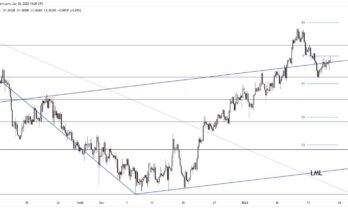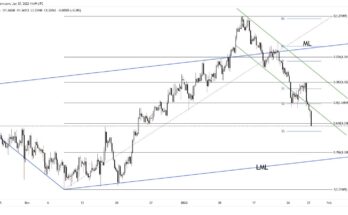Another strong day for US equities unfolded yesterday, with investors shaking off the disappointing US retail sales numbers and looking to add risk back to their portfolios. The S&P put in a strong gain of 0.58% on the session, pushing the index within striking distance of the all-time highs witnessed back in mid-January, while the term structure of the VIX moved lower across the curve with the cash contract sliding into the low 14s.
Interestingly, the inverse correlation of the S&P and the VIX has started to decouple somewhat over the last few days, with the exuberance seen in the equity markets not being matched by the same level of weakness in the VIX. While we’re not near levels of the decoupling we saw in late January, it is worth noting that this correlation usually reverts itself, and when it did in late-January, emerging market worries were the cause of the sharp sell-off in the S&P.
Chinese inflation data for the month of January came in a little warmer than analysts had expected, driven by a rise in vegetables and fruit, with the headline reading increasing by 2.5% compared to January of last year, topping estimates of a 2.3% increase.
Data from the banking sector also showed that non-performing loans increased for ninth-straight quarter to the highest level since 2008, highlighting the issues of asset quality and the pressures on profit growth as the Chinese economy slows. Despite the slightly negative economic data, investors took the news in stride, keeping the Shanghai Comp in the green to end its session up by 0.83%. The Nikkei was unable to receive the same fan-fare, with the Japanese equity index falling 1.53%, pressured lower by a stronger yen that forced USDJPY to grind south of the 102 handle.
The overnight pessimism seen in Japan was quickly reversed as Eurozone GDP numbers for Q4 hit the wires, showing growth in the final quarter of 2013 increased by 0.3% in the common-currency bloc, better than the 0.2% analysts had expected. The greater economic expansion in the zone, which was driven by stronger GDP readings from Germany and France, has European bourses displaying a loftiness to their tapes, with the CAC, DAX, and STOXX up by 0.49%, 0.59%, and 0.63% respectively at the time of writing.
Although GDP contracted by 0.4% on an overall basis in 2013, today’s numbers marked the third successive quarter of expansion after six quarters of contraction, and eases some pressure off the ECB to take monetary policy action at the their next meeting. Some of the more encouraging aspects of the report are that the gap between growth in the core and periphery narrowed in Q4, and although southern Europe still greatly lags the north in terms of real GDP levels, the growth gap was only 0.1% points for the last quarter in 2014. The EUR is on the rise against the USD this morning as traders digest the new data and the effect it will have on the ECB’s decision making process over the coming months; EURUSD is toying with vaulting past the 1.3700 handle, with the next major level of resistance at 1.3740 in its sights.
Heading into the North American open, equity futures are pivoting around UNCH, unsure still of whether the bulls or bears will control the tape heading into the end of the week. The DXY is off over 0.2% in the low-80s, dragged lower this morning by JPY and EUR strength. Commodities are mixed before the opening bell, with front-month WTI weaker but still above $100/barrel, while Gold gains momentum north of $1,300/ounce.
The Loonie was on strong footing during the overnight session, but is unwinding those gains after Canadian manufacturing sales for December fell off a cliff and dropped by 0.9%, a drastic miss of the 0.1% increase that had been expected, with November’s reading being revised lower from 1.0% to only 0.5%. While manufacturing sales is somewhat stale data because of the lag-time in release, it’s still an important indicator for the health of the Canadian economy, and illustrates the weakness in the manufacturing space. USDCAD has grinded higher from its overnight lows, but still remains below the 1.1000 level, which will be a key resistance level if technical traders want to continue to push the consolidation in USDCAD lower from its current levels.
Looking ahead for the remainder of the session, University of Michigan Consumer Sentiment numbers for February are due to be released at 9:55am EST. The level of confidence on the current and future economic situation from the US consumer has taken a bit of a hit as of late, with expectations the slide continues today, coming in at a reading of 80.6. With the soft retails sales numbers yesterday, today’s reading will be important to see whether this level of activity on the consumer side was just an aberration, or the potential of something more prolonged if sentiment continues to come down from the peak seen in December. Although a worse than expected UoM Sentiment reading will not change the Fed’s tapering schedule by itself, the relative strength of the USD to its peers will likely suffer should the consumer weakness continue.
Further reading:
- Taking Stock in February



